
Filter News
Area of Research
- (-) Materials (326)
- (-) Materials for Computing (26)
- Advanced Manufacturing (18)
- Biological Systems (15)
- Biology and Environment (142)
- Biology and Soft Matter (5)
- Building Technologies (5)
- Chemical and Engineering Materials (3)
- Chemistry and Physics at Interfaces (11)
- Clean Energy (335)
- Climate and Environmental Systems (9)
- Computational Biology (5)
- Computational Chemistry (5)
- Computational Engineering (3)
- Computer Science (7)
- Data (1)
- Earth Sciences (1)
- Electricity and Smart Grid (1)
- Energy Frontier Research Centers (14)
- Energy Sciences (2)
- Fossil Energy (2)
- Fuel Cycle Science and Technology (3)
- Functional Materials for Energy (14)
- Fusion and Fission (49)
- Fusion Energy (9)
- Geographic Information Science and Technology (3)
- Isotope Development and Production (1)
- Isotopes (29)
- Materials Characterization (2)
- Materials Synthesis from Atoms to Systems (13)
- Materials Under Extremes (12)
- National Security (69)
- Neutron Data Analysis and Visualization (2)
- Neutron Science (149)
- Nuclear Science and Technology (51)
- Nuclear Systems Modeling, Simulation and Validation (1)
- Nuclear Systems Technology (1)
- Quantum Condensed Matter (4)
- Quantum information Science (5)
- Reactor Technology (1)
- Renewable Energy (2)
- Sensors and Controls (3)
- Supercomputing (260)
- Transportation Systems (9)
News Type
News Topics
- 3-D Printing/Advanced Manufacturing (19)
- Advanced Reactors (2)
- Artificial Intelligence (8)
- Big Data (2)
- Bioenergy (11)
- Biology (5)
- Biomedical (6)
- Buildings (3)
- Chemical Sciences (30)
- Clean Water (2)
- Climate Change (6)
- Composites (6)
- Computer Science (22)
- Coronavirus (4)
- Critical Materials (8)
- Cybersecurity (4)
- Decarbonization (6)
- Energy Storage (29)
- Environment (14)
- Exascale Computing (2)
- Frontier (2)
- Fusion (4)
- Grid (4)
- High-Performance Computing (3)
- Isotopes (12)
- ITER (1)
- Machine Learning (4)
- Materials (61)
- Materials Science (61)
- Mathematics (1)
- Microscopy (20)
- Molten Salt (2)
- Nanotechnology (33)
- National Security (4)
- Net Zero (1)
- Neutron Science (31)
- Nuclear Energy (11)
- Partnerships (11)
- Physics (25)
- Polymers (15)
- Quantum Computing (3)
- Quantum Science (12)
- Renewable Energy (1)
- Security (3)
- Simulation (1)
- Space Exploration (2)
- Summit (3)
- Sustainable Energy (12)
- Transformational Challenge Reactor (3)
- Transportation (12)
Media Contacts
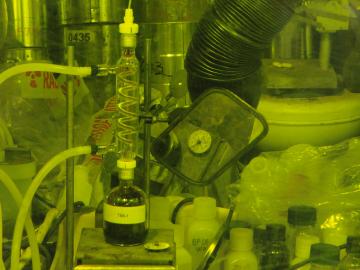
Nearly 100 commercial nuclear reactors supply one-fifth of America’s energy. For each fuel rod in a reactor assembly, only 5 percent of its energy is consumed before fission can no longer be sustained efficiently for power production and the fuel assembly must be replaced. Power plan...
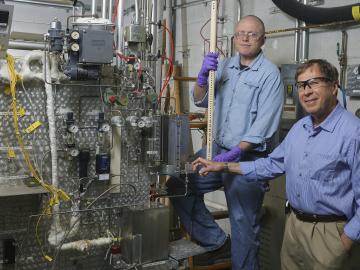
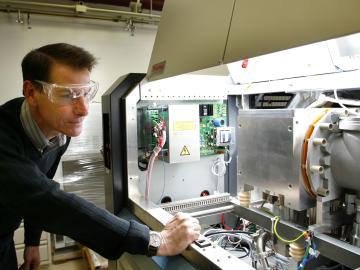
A group of nuclear detectives at the Department of Energy’s Oak Ridge National Laboratory takes on tough challenges, from detecting illicit uranium using isotopic “fingerprints” to investigating Presidential assassination conspiracies.
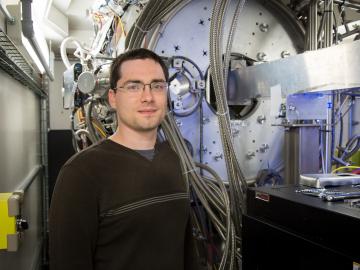
Rechargeable batteries power everything from electric vehicles to wearable gadgets, but obstacles limit the creation of sleeker, longer-lasting and more efficient power sources. Batteries produce electricity when charged atoms, known as ions, move in a circuit from a positive end ...
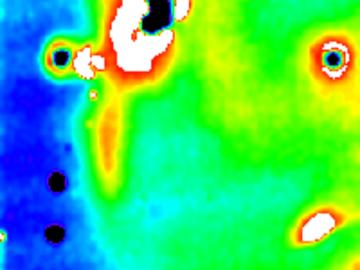
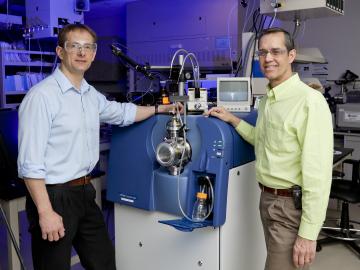
The Department of Energy’s Oak Ridge National Laboratory and SCIEX of Framingham, Mass., have signed a licensing agreement for technologies that speed up, simplify and expand the use of analytic chemistry equipment. SCIEX is a leading manufacturer of mass spectrome...
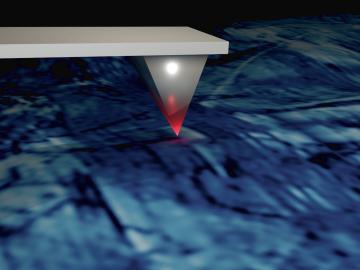
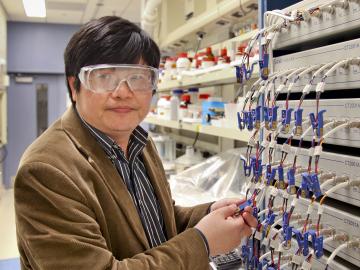
Sheng Dai of the Department of Energy’s Oak Ridge National Laboratory has been named to a list of the most highly cited researchers in the world. Thomson Reuters Highly Cited Researchers is an annual list that recognizes some of the world’s leading

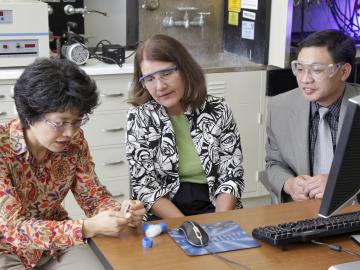
The Department of Energy's Oak Ridge National Laboratory and Solid Power Inc. of Louisville, Colo., have signed an exclusive agreement licensing lithium-sulfur materials for next-generation batteries. The company licensed a portfolio of ORNL patents relating to lit...


